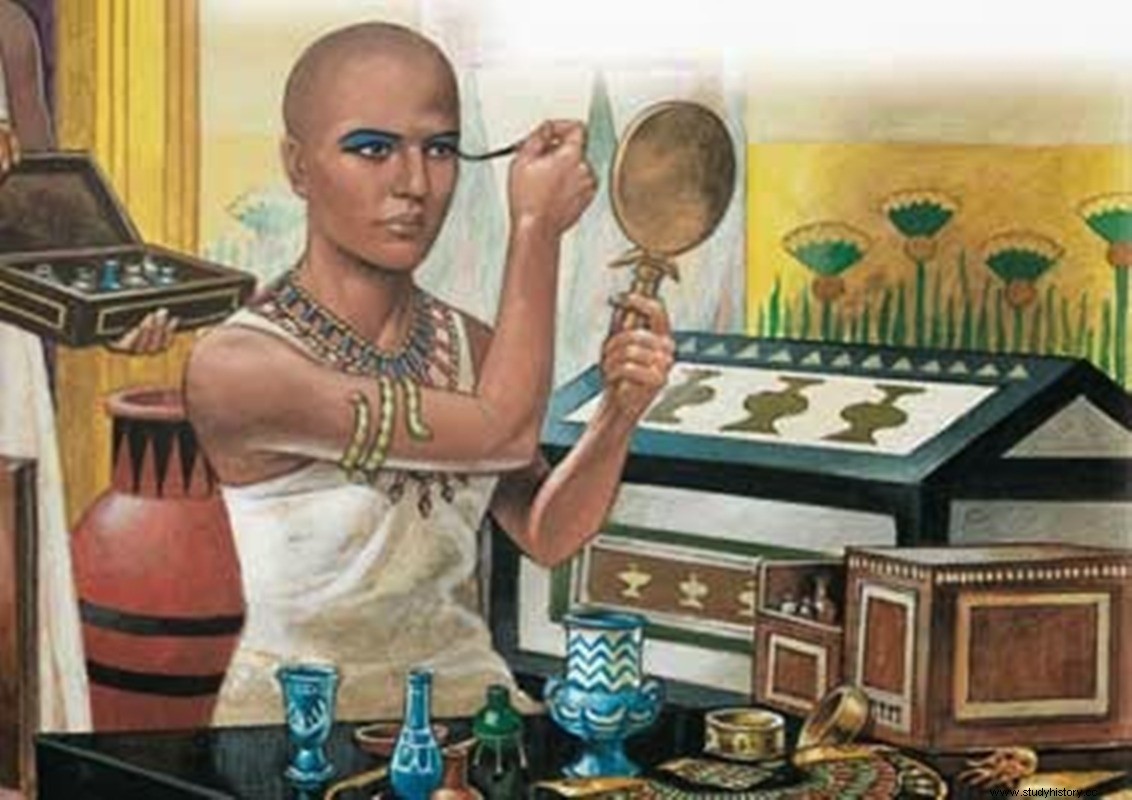After a refreshing shower, a good deodorant that does not leave you. Although the first deodorant was marketed in Philadelphia in 1888 under the name of Mum and the first antiperspirant in 1903 with Everdry , you will agree with me that this body odor thing is as old as sweat. So, it is not surprising that the neat Egyptians already had their particular deodorant. After a good bath, often scented, they smeared their bodies with olive oil and then rubbed their skin with some abrasive compound as an exfoliant that dragged away oil and dirt (today we say dead skin). And they finished off the job by applying frankincense or cinnamon-based ointments to their armpits that masked the smell during... Who knows!
So obsessed were the Egyptians with beauty that it is very difficult to find graphic representations showing them old and wrinkled. To remove telltale wrinkles from the number of Nile floods, they used a mixture of calcite and natron powder (also used in mummification processes) so abrasive that it literally stripped away the top layer of skin and left the face "raw"... like a rosy baby's bottom.

Once showered and corrected the problem that "the spoiler sings" to us, they went to groom themselves, restore themselves or whatever they called it in Ancient Egypt. To do this, you are going to allow me the license to open the imaginary vanity case of an Egyptian woman of the time to see what we found.
The Egyptians, so fond of smelling good, would have enjoyed the film Perfume , story of a murderer, in which Dustin Hoffman spends almost the entire film mixing oils and fragrances to obtain "the perfume". The basis of his perfumes were cinnamon, frankincense, myrrh and hundreds of local or imported plants and flowers. Depending on its preparation, the presentation format could be liquid, in oils and even solid. By soaking dried flowers with oils or resins, they "stealed" the scent of the flowers, obtaining a scented oil or perfume if diluted. Another method of elaboration was to mix the resins with dried flowers, aromatic spices or plants, and heat them to obtain a perfumed paste that, before cooling, was shaped into a cone shape and placed on the head; the heat of the day made it melt, perfuming the whole body. Nor would it be strange to find in this particular bag a bottle of honey or moringa oil that was used as a moisturizer, to relieve sunburn... or to remove stretch marks after pregnancy! Henna to color the hair, either their own or that of the wig, and a wax-based fixative that they left to dry in the sun to maintain the style. A touch of red for the lips (Cleopatra had a very particular red lipstick made from sun-dried and powdered beetles) and, most importantly, the black eyeshadow or kohl . And I say the most important, because it was not only a cosmetic, but it may have been one of the first ophthalmological preparations in history. The kohl It was a compound based on crushed galena mineral, mixed with other ingredients, such as soot for the poorest and whatever the rich wanted, which was diluted with some oil or fat to fix it around the eyes. In addition to the aesthetic component, the kohl served to repel insects, reduce the reflection of the sun and helped the eyelids in the mission of protecting the eyes by trapping sand particles.
